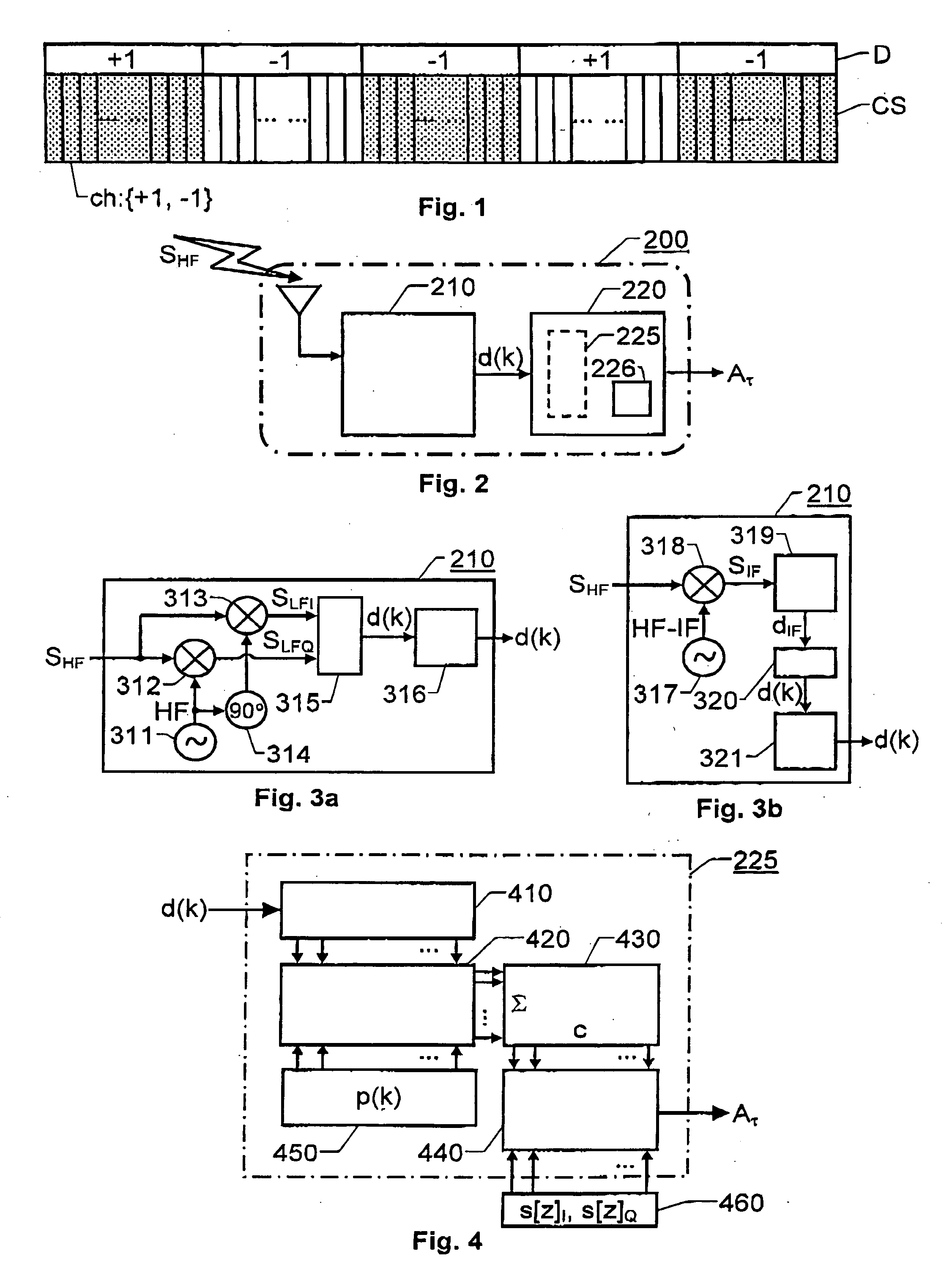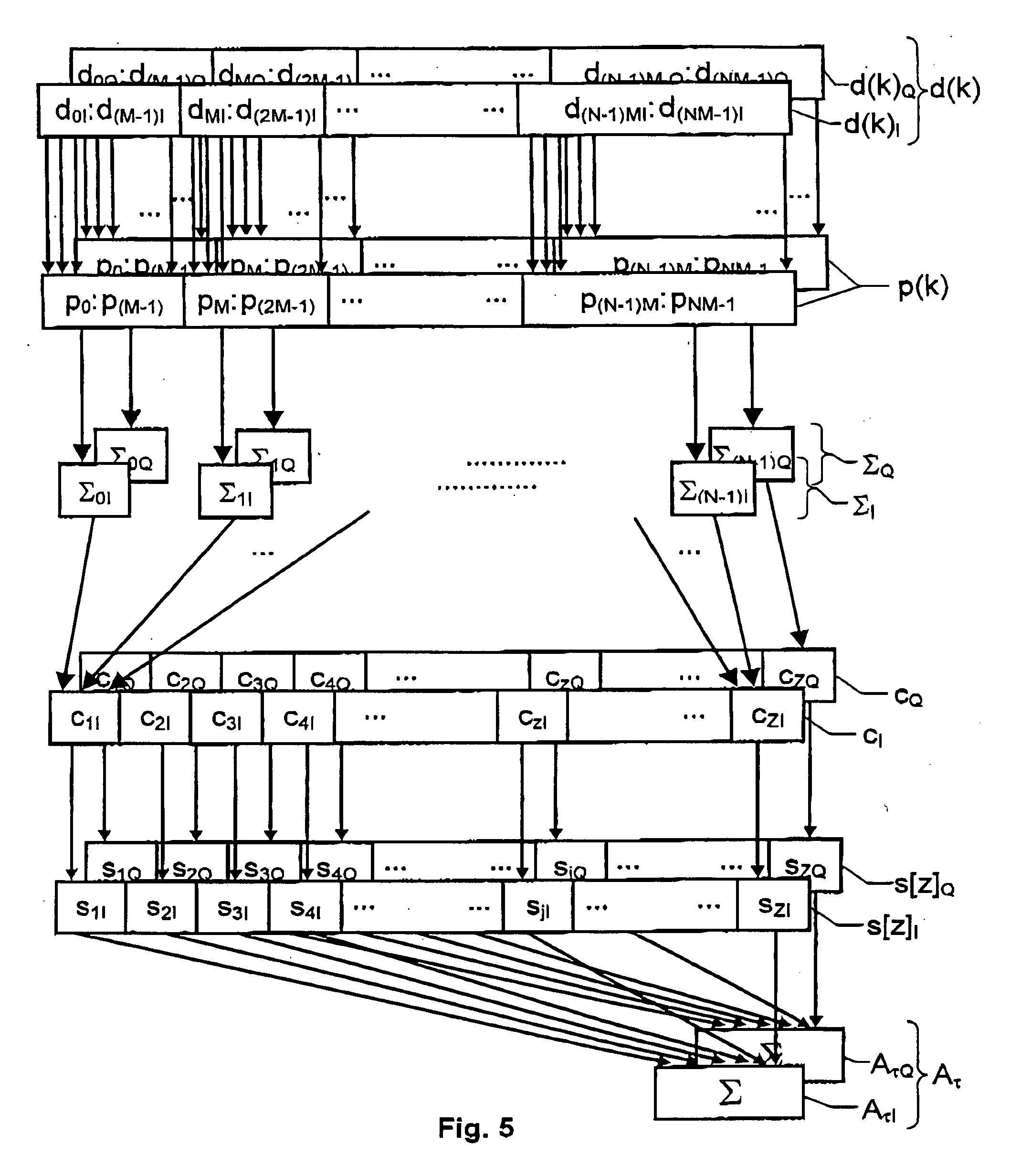Software based spread spectrum signal processing
a software and spectrum signal technology, applied in the field of spread spectrum signal processing, can solve the problems of inability to receive, device is not only expensive, and unit weight and heavyness, and achieves the effects of reducing the number of operations, reducing memory requirements, and efficient mapping
- Summary
- Abstract
- Description
- Claims
- Application Information
AI Technical Summary
Benefits of technology
Problems solved by technology
Method used
Image
Examples
first embodiment
[0073]FIG. 3a shows a block diagram over the data interface unit 210 according the invention. Here, the data interface unit 210 includes a downconverting section, a digitizing section 315 and a buffer unit 316.
[0074] The downconverting section is adapted to receive the spread spectrum source signal SHF, and in response thereto produce a pair of frequency downconverted signals representing in-phase data SLFI and quadrature-phase data SLFQ respectively. To this aim, the downconverting section may include an oscillator 311, a first mixing means 312, a second mixing means 313 and a phase shifting means 314.
[0075] The oscillator 311 generates a sinusoid signal of a frequency HF which is essentially the same as that of the spread spectrum source signal SHF (i.e. a relatively high frequency). The oscillator frequency HF is fed both to the first mixing means 312 and the phase shifting means 314. The first mixing means 312 also receives the spread spectrum source signal SHF, and as a result...
second embodiment
[0079]FIG. 3b shows a block diagram over the data interface unit 210 according the invention. In this case, the data interface unit 210 includes a primary downconverting section, a digitizing section 319, a secondary downconverting section 320 and a buffer unit 321.
[0080] The primary downconverting section is adapted to receive the spread spectrum source signal SHF, and in response thereto produce a downconverted signal SIF. To this aim, the primary downconverting section may include an oscillator 317 and a mixing means 318. The oscillator 317 generates a frequency HF-IF, which is slightly lower than in the embodiment described above with reference to the FIG. 3a, however still a comparatively high frequency. The oscillator frequency HF-IF is fed to the mixing means 317. The mixing means 317 also receives the spread spectrum source signal SHF, and as a result of a mixing process accomplished by the mixing means 317, a frequency downconverted signal SIF is produced.
[0081] The digiti...
PUM
 Login to View More
Login to View More Abstract
Description
Claims
Application Information
 Login to View More
Login to View More - R&D
- Intellectual Property
- Life Sciences
- Materials
- Tech Scout
- Unparalleled Data Quality
- Higher Quality Content
- 60% Fewer Hallucinations
Browse by: Latest US Patents, China's latest patents, Technical Efficacy Thesaurus, Application Domain, Technology Topic, Popular Technical Reports.
© 2025 PatSnap. All rights reserved.Legal|Privacy policy|Modern Slavery Act Transparency Statement|Sitemap|About US| Contact US: help@patsnap.com



